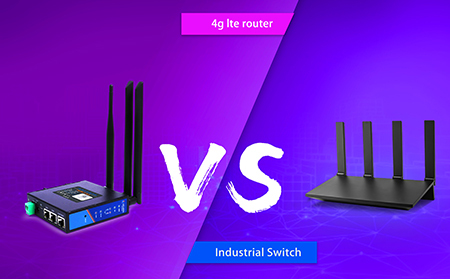Now is the information age, with the progress of the times, the Internet is an indispensable part of people's lives. It usually consists of many different types of computer networks connected to each other. If several computer networks are physically connected and cannot communicate with each other, the "interconnection" has no practical significance.So when we talk about "interconnection", we have implied that these interconnected computers can communicate, that is to say, from a functional and logical point of view, computer networks have formed a large computer network called the "Internet".
A 4G LTE Router, also known as a router, is a device that interconnects at the network layer. It is more complex and more flexible than a bridge. The 4G LTE router has a stronger ability to interconnect heterogeneous networks, including local area networks and wide area networks. The 4G LTE router has two typical functions, namely a data channel function and a control function.Data channel functions include forwarding decisions, backplane forwarding, and output link scheduling, which are generally performed by specific hardware. Control functions are generally implemented by software, including information exchange with adjacent 4G LTE routers, system configuration, system management, etc.
Industrial Switch is a kind of network equipment based on MAC (hardware address of network card) identification, which can complete the function of encapsulating and forwarding data packets. Today's switches are classified as Layer 2, Layer 3, or higher layer switches. Layer 3 switches can also have routing capabilities and have faster forwarding rates than low-end 4G LTE routers.Its main feature is: once routing, multiple forwarding.

Interconnecting networks involves the use of intermediary devices or systems called trunking systems. According to the level of the relay system, there are five types of relay systems:
1. Physical layer (often referred to as the first layer, layer L1) relay system, that is, the repeater.
2. Data Link Layer (i.e., Layer 2, Layer L2), i.e., bridge or bridge.
3. Network layer (Layer 3, Layer L3) relay system, i.e. 4G LTE router.
4. A mixture of a bridge and a 4G LTE router a bridge combines the functions of a bridge and a 4G LTE router.
5. A relay system above the network layer, that is, a gateway.
When the relay system is a repeater, it is generally not called a network interconnection, because it only enlarges a network, which is still a network. Because of its complexity, the high-level gateway is seldom used at present. Therefore, when network interconnection is generally discussed, it refers to networks interconnected by switches and 4G LTE routers.This article focuses on switches and 4G LTE routers and the differences between them.
The main differences between 4G LTE routers and industrial switches are as follows:
(1) Different levels of work
The original switch was designed to work at the data link layer, or layer 2, of the OSI/RM open architecture, while the 4G LTE router was originally designed to work at the network layer of the OSI model.Because the switch works at the second layer (data link layer) of the OSI, its working principle is relatively simple, while the 4G LTE router works at the third layer (network layer) of the OSI and can obtain more protocol information, and the 4G LTE router can make more intelligent forwarding decisions.
(2) Data forwarding is based on different objects.
Industrial switches use physical addresses, or MAC addresses, to determine the destination address for forwarding data. The 4G LTE router, on the other hand, uses the ID numbers (i.e., IP addresses) of different networks to determine the address for data forwarding. IP addresses are implemented in software and describe the network on which the device is located. These Layer 3 addresses are sometimes referred to as protocol addresses or network addresses.The MAC address usually comes with the hardware, is assigned by the network card manufacturer, and has been solidified into the network card, which is generally unchangeable. IP addresses are usually assigned automatically by the network administrator or the system.
(3) The traditional switch can only divide the collision domain, but not the broadcast domain; The 4G LTE router splits the broadcast domain
Network segments connected by industrial switches still belong to the same broadcast domain, and broadcast packets are spread across all network segments connected by the switches, causing traffic congestion and security vulnerabilities in some cases. Network segments connected to the 4G LTE router are assigned different broadcast domains, and broadcast data does not traverse the 4G LTE router.Although switches above Layer 3 have VLAN functions and can also divide broadcast domains, the sub-broadcast domains cannot communicate with each other, and 4G LTE routers are still required for communication between them.
(4) 4G LTE router provides firewall services
The 4G LTE router prevents broadcast storms by only forwarding packets to specific addresses and not forwarding packets that do not support routing protocols or packets to unknown destination networks.
Industrial switches are generally used for LAN-wan connections. Switches belong to bridges and are data link layer devices. Some switches can also implement Layer 3 switching. 4G LTE router is used for WAN-WAN connection, which can solve the problem of packet forwarding between heterogeneous networks and act on the network layer. They simply accept incoming packets from one line and forward them to another.The two lines may belong to different networks and use different protocols. Comparatively speaking, the 4G LTE router is more powerful than the switch, but its speed is relatively slow and its price is expensive. The third layer switch not only has the ability to forward messages at the line speed of the switch, but also has the good control function of the 4G LTE router, so it is widely used.

